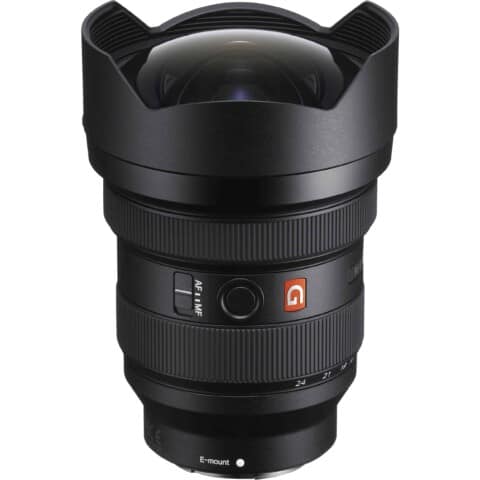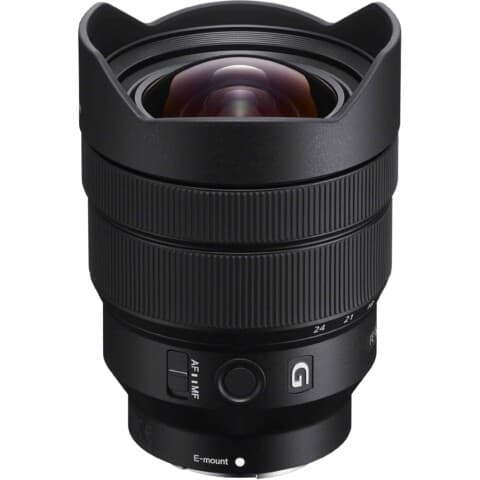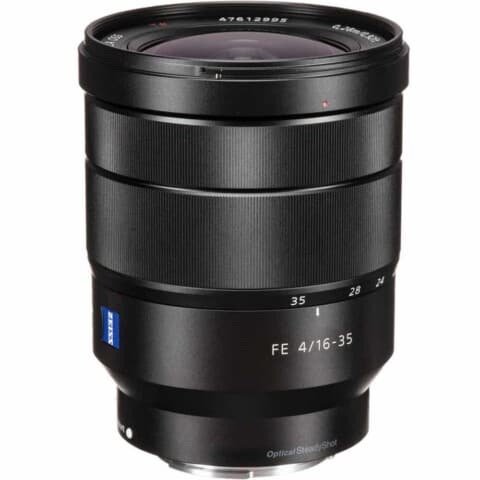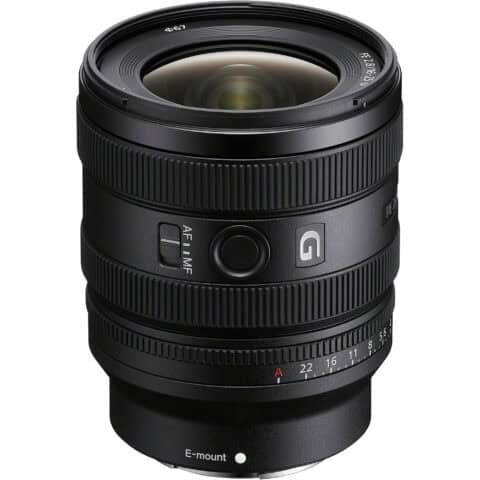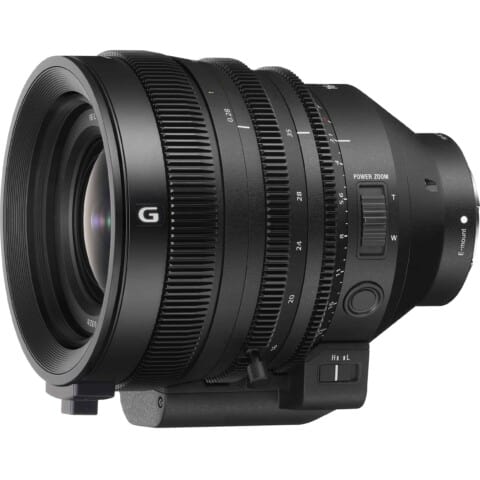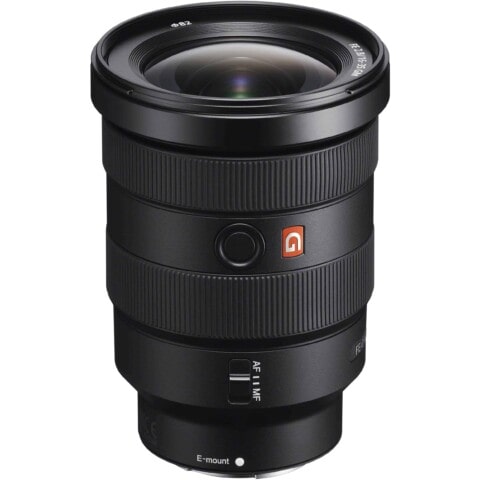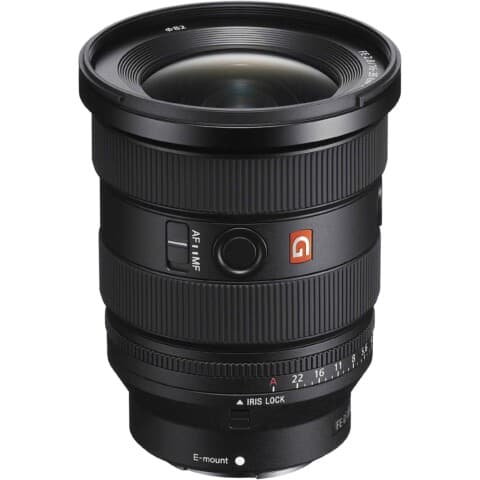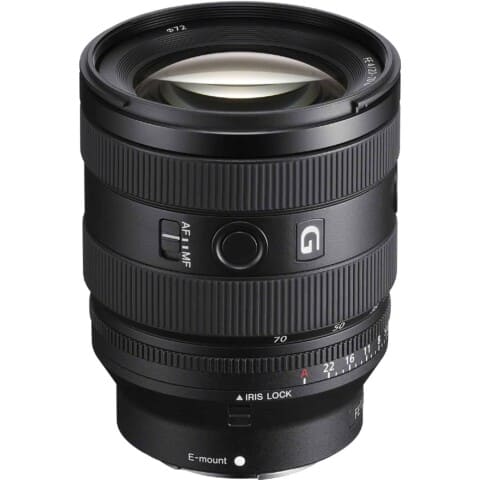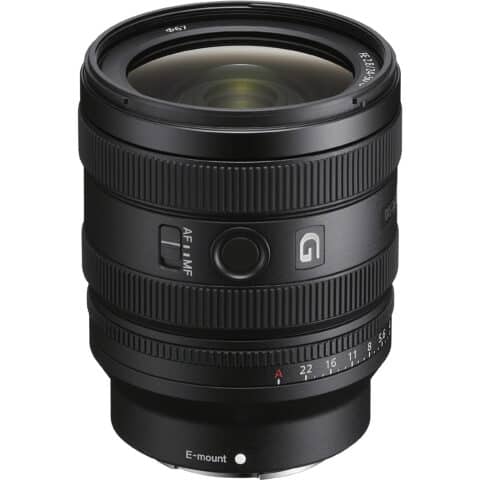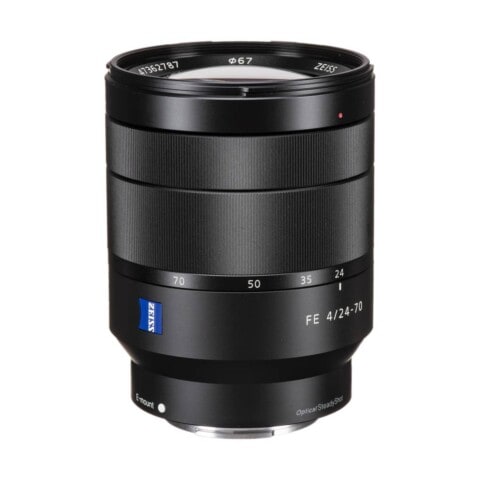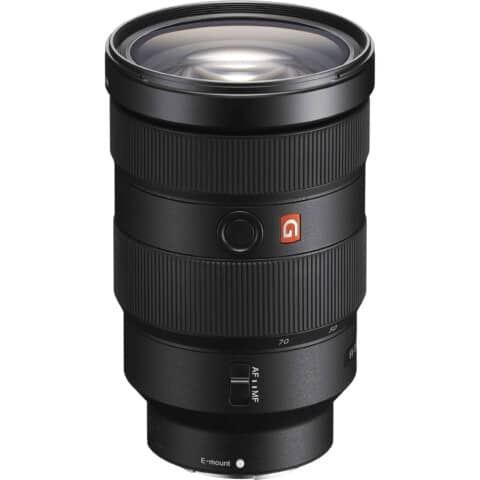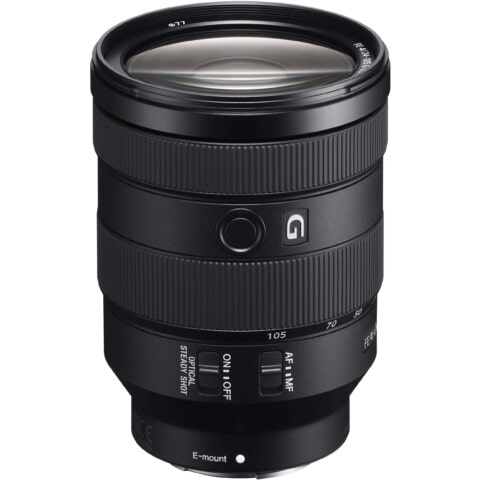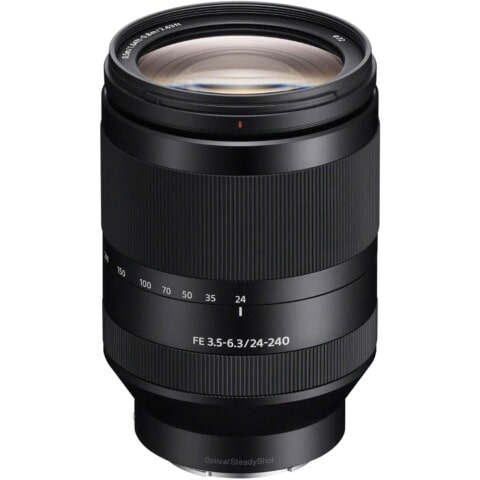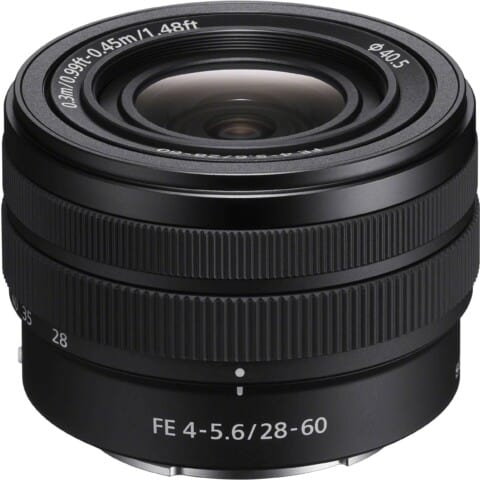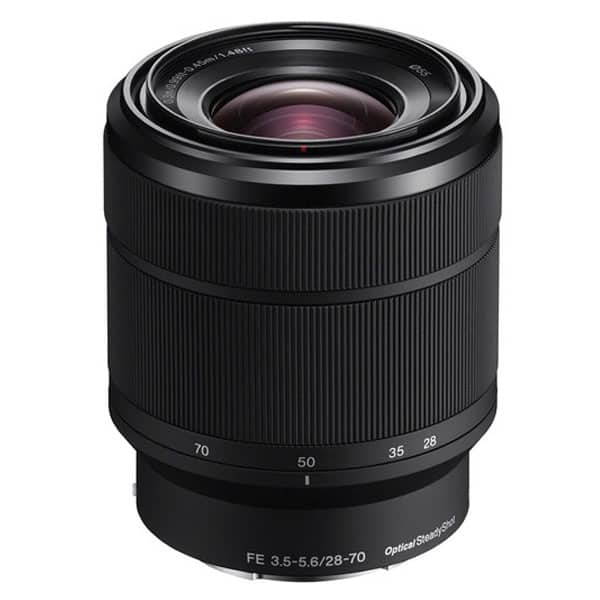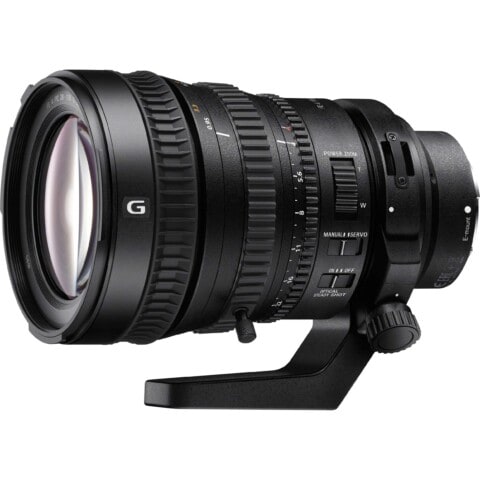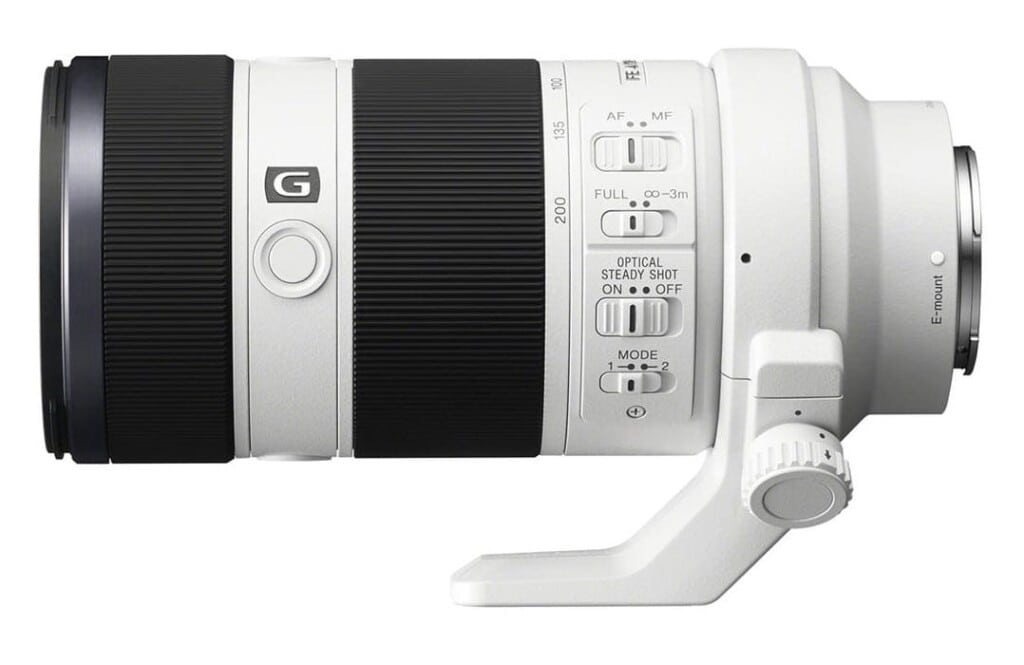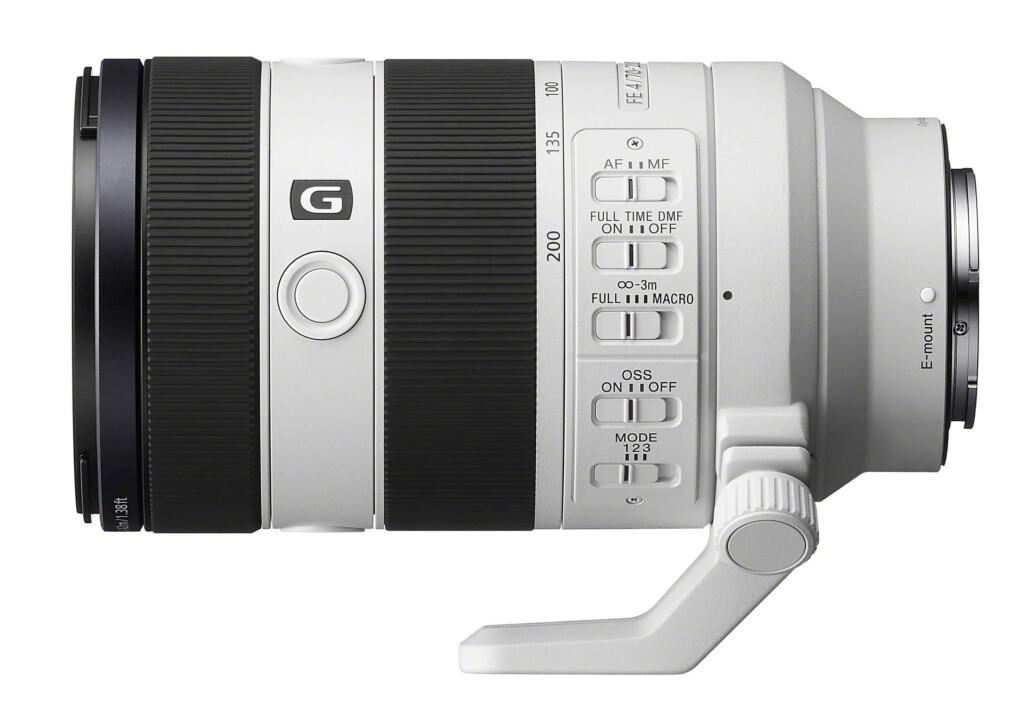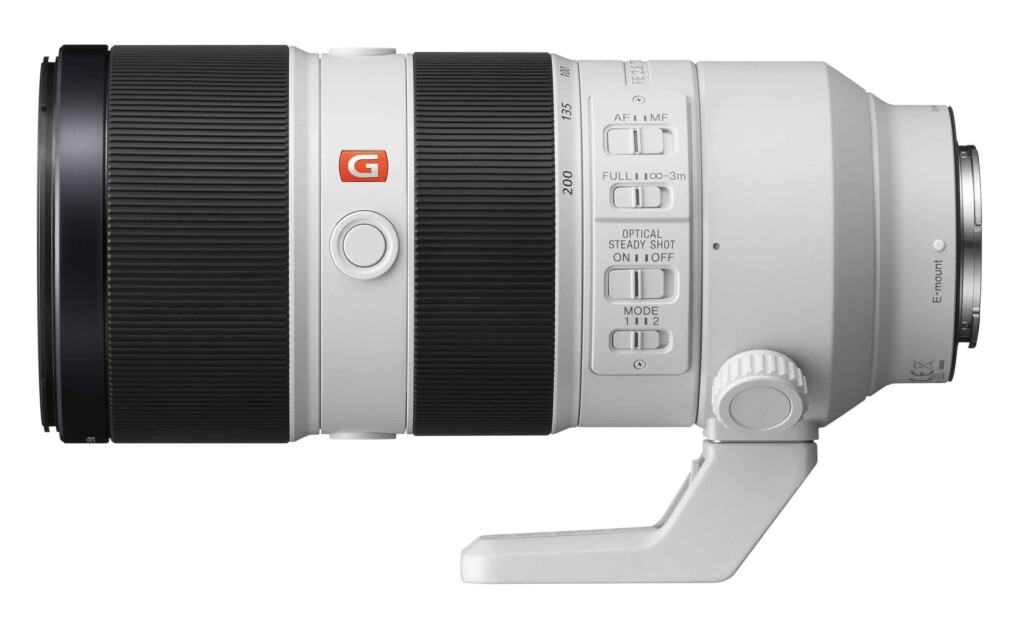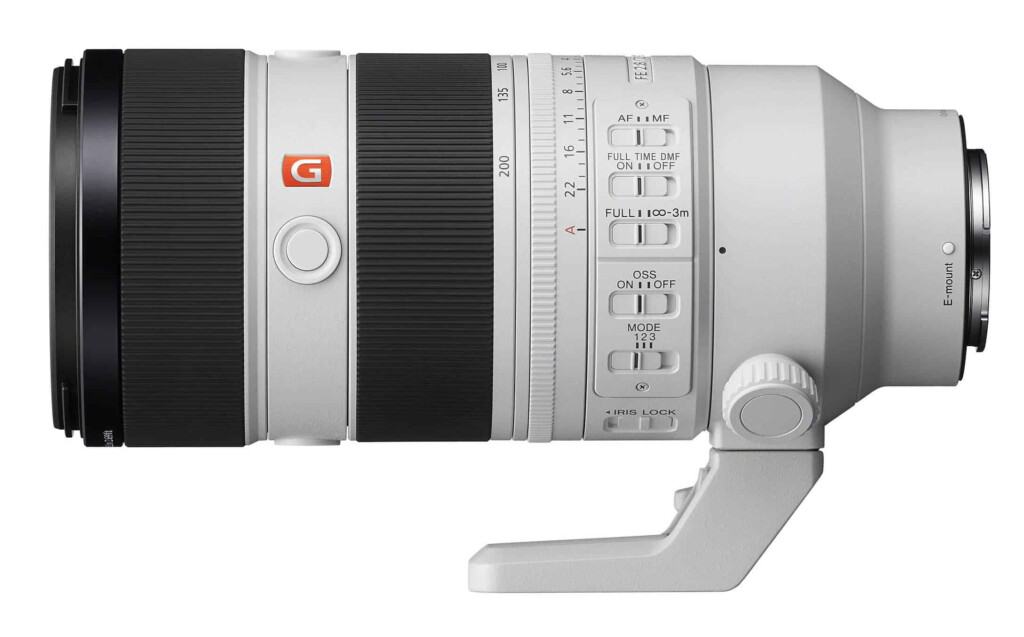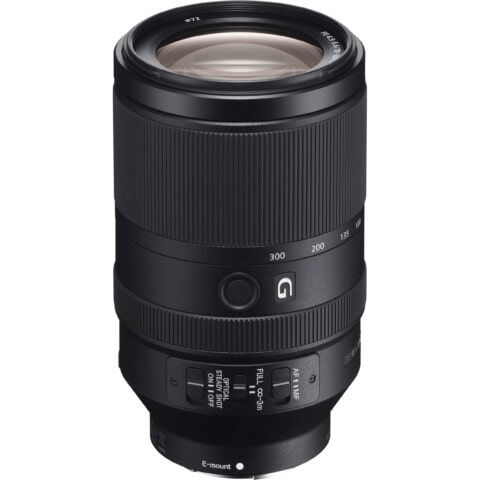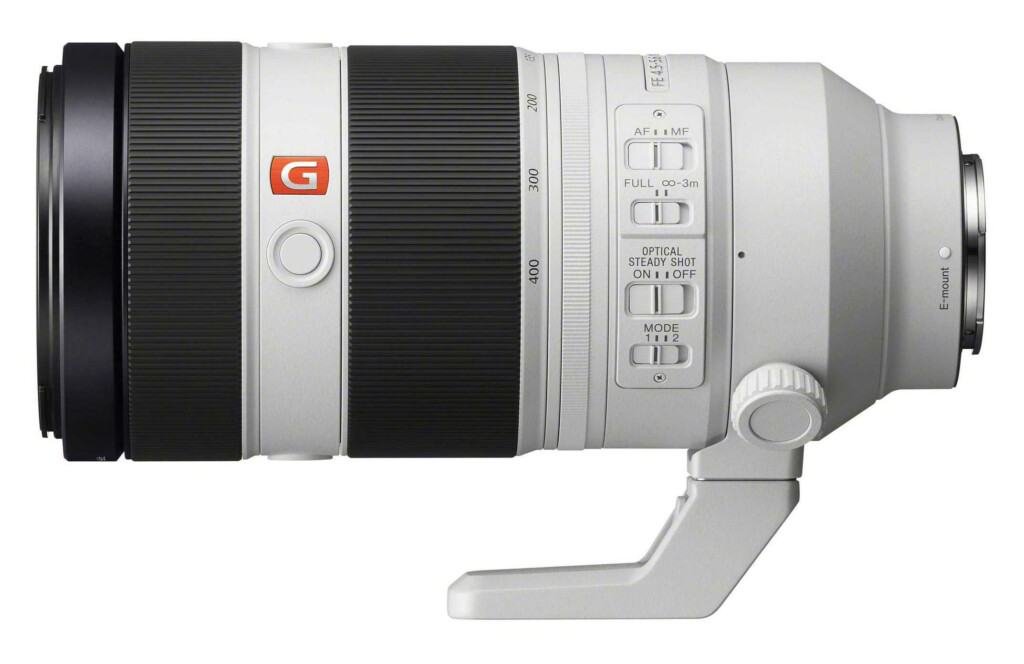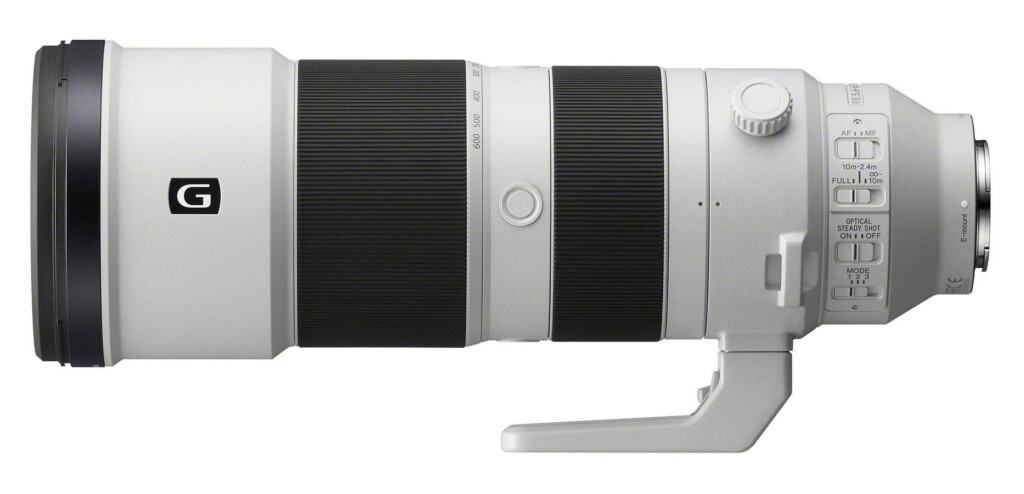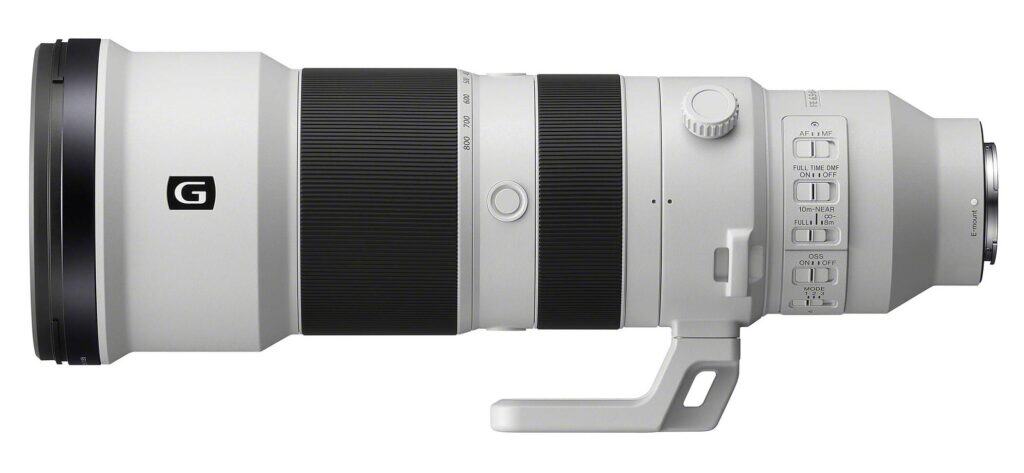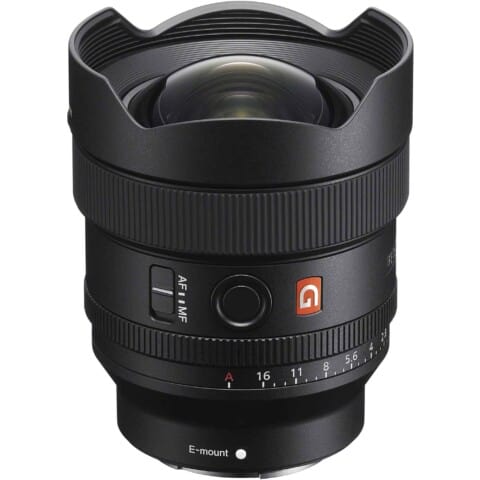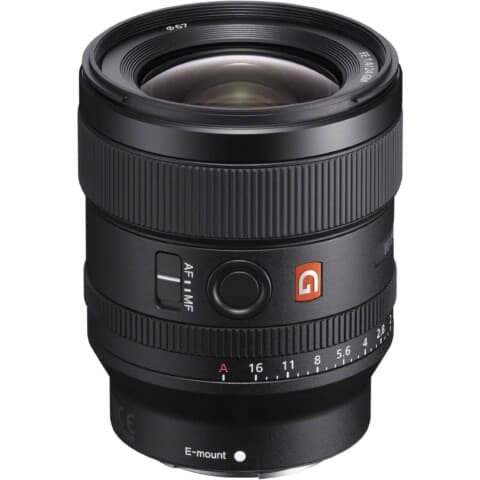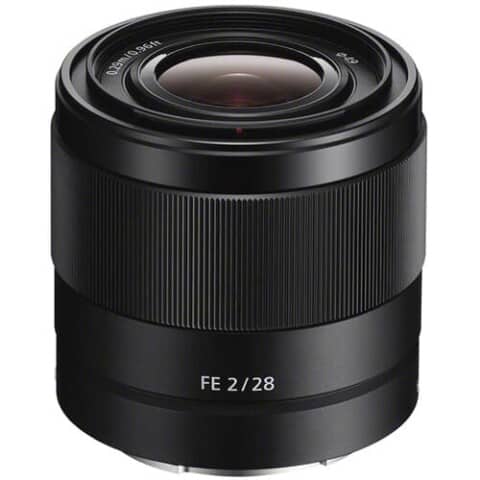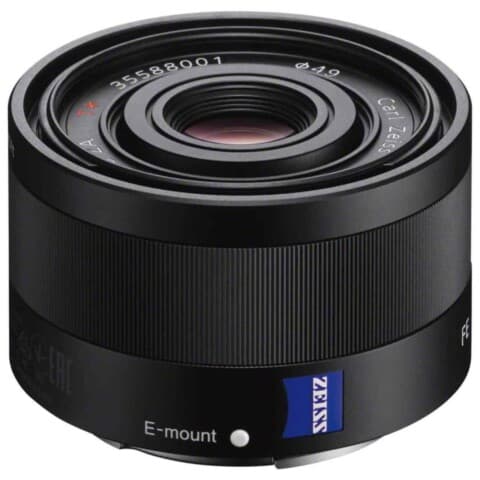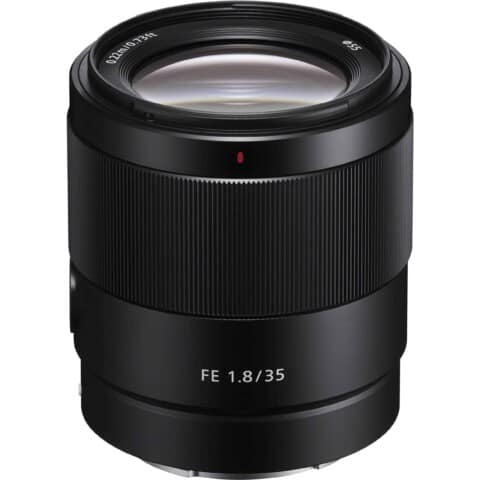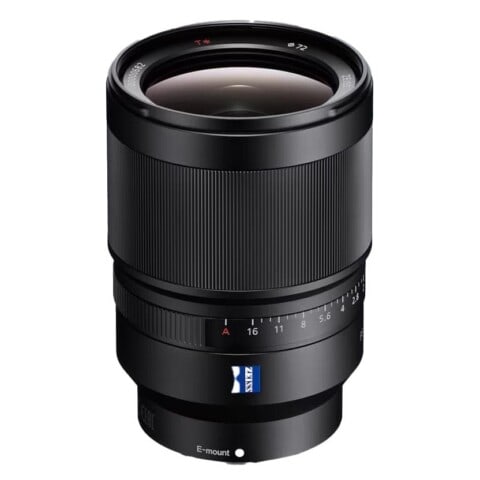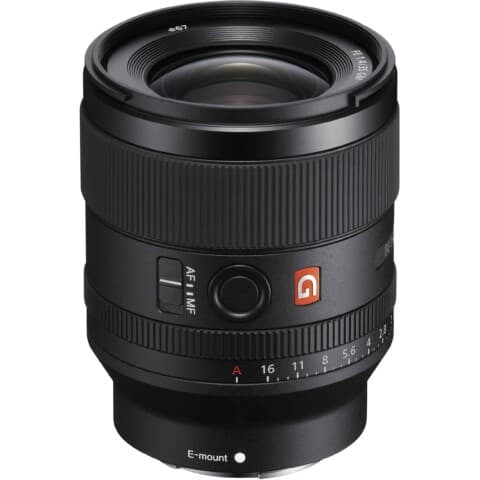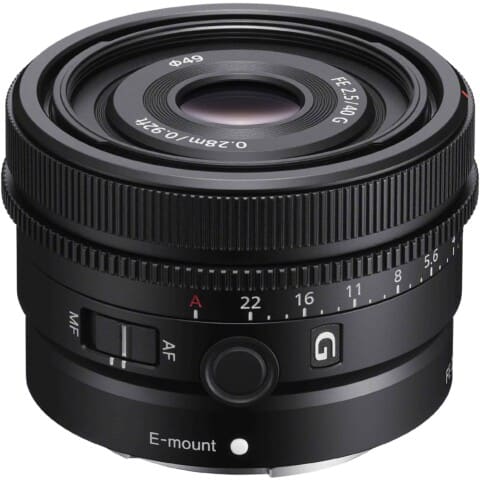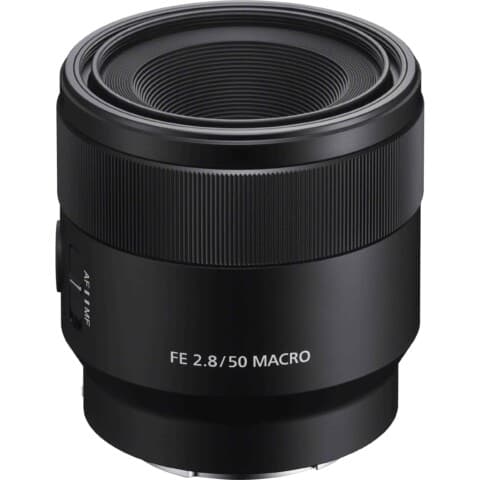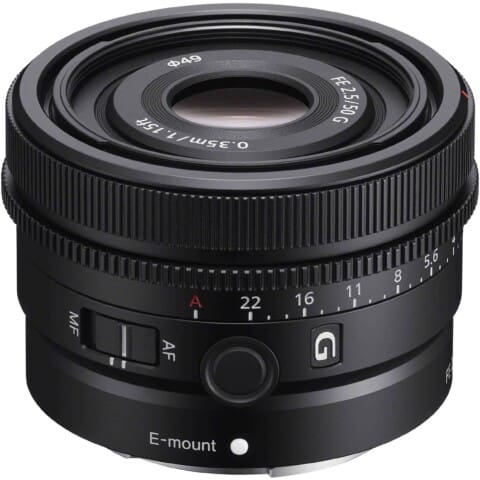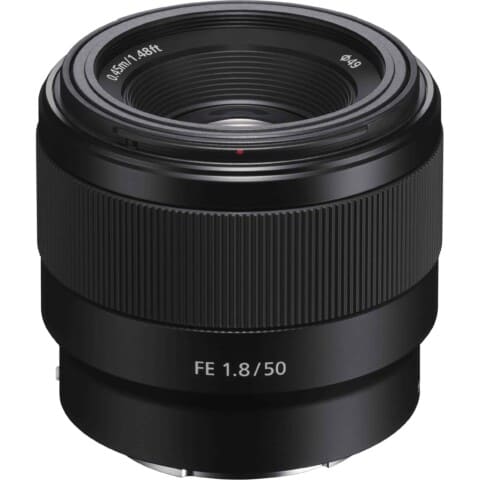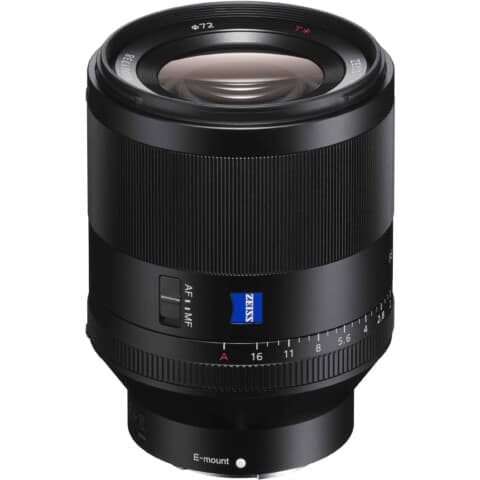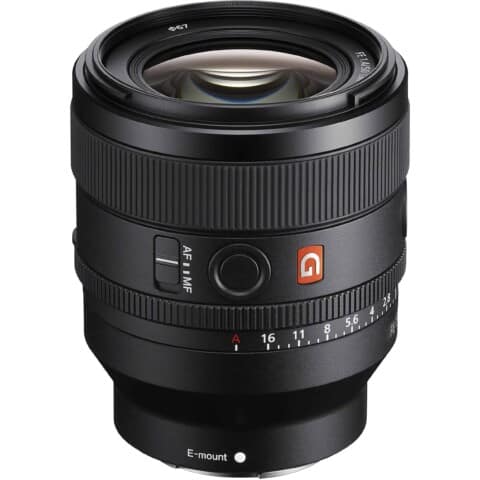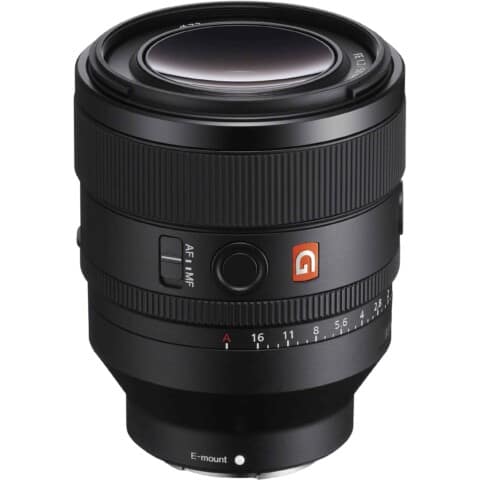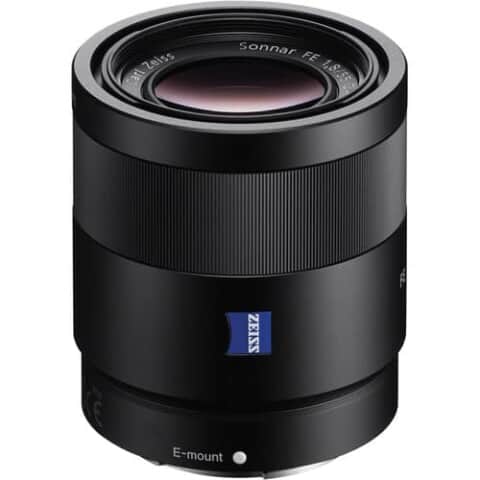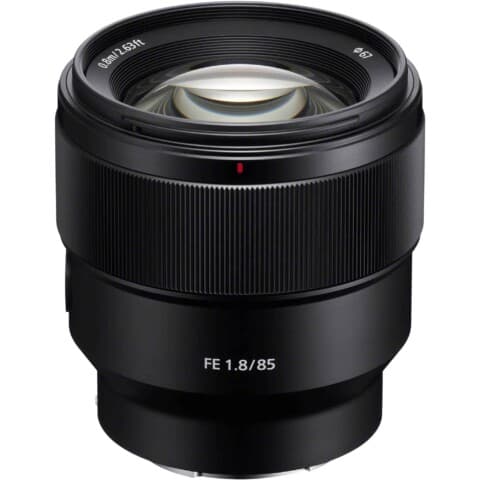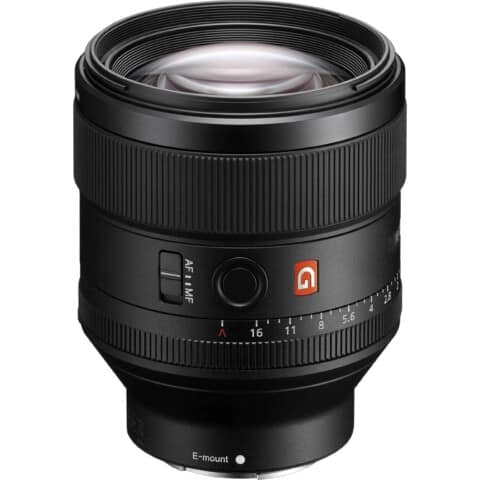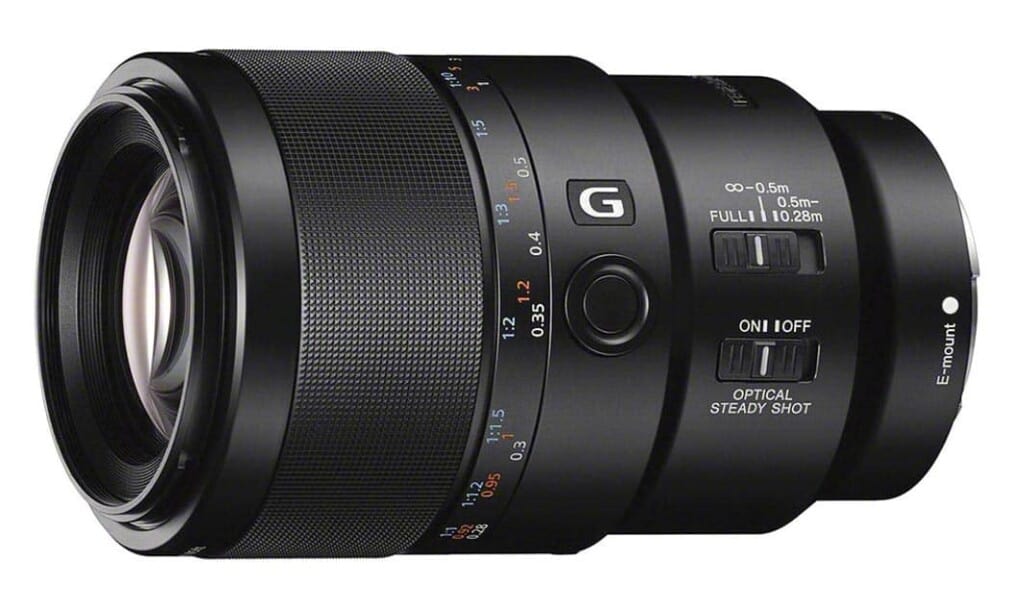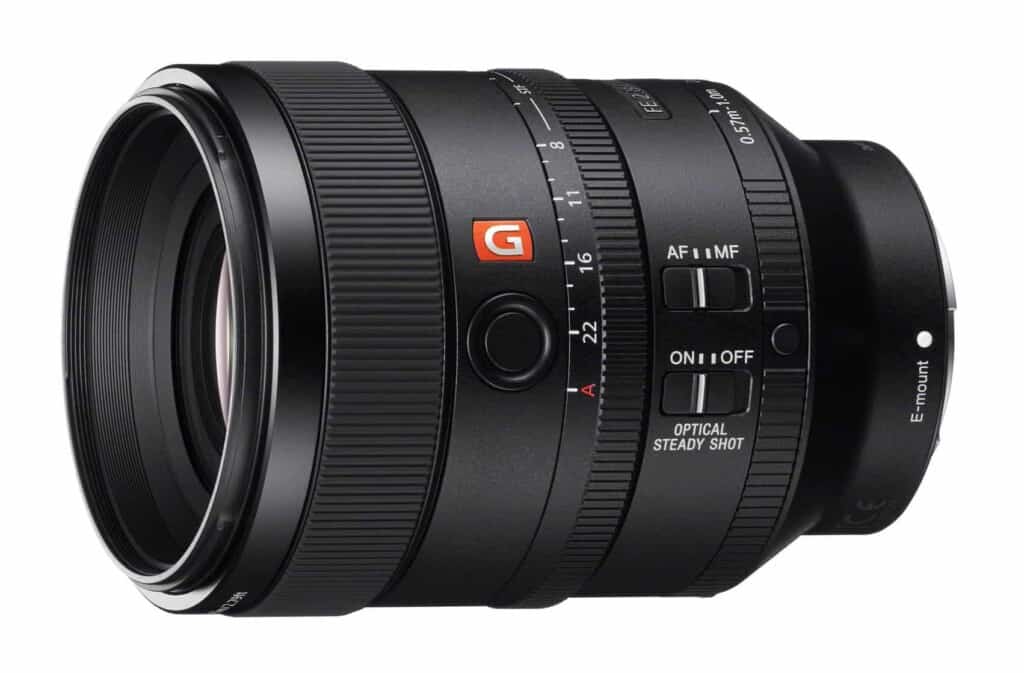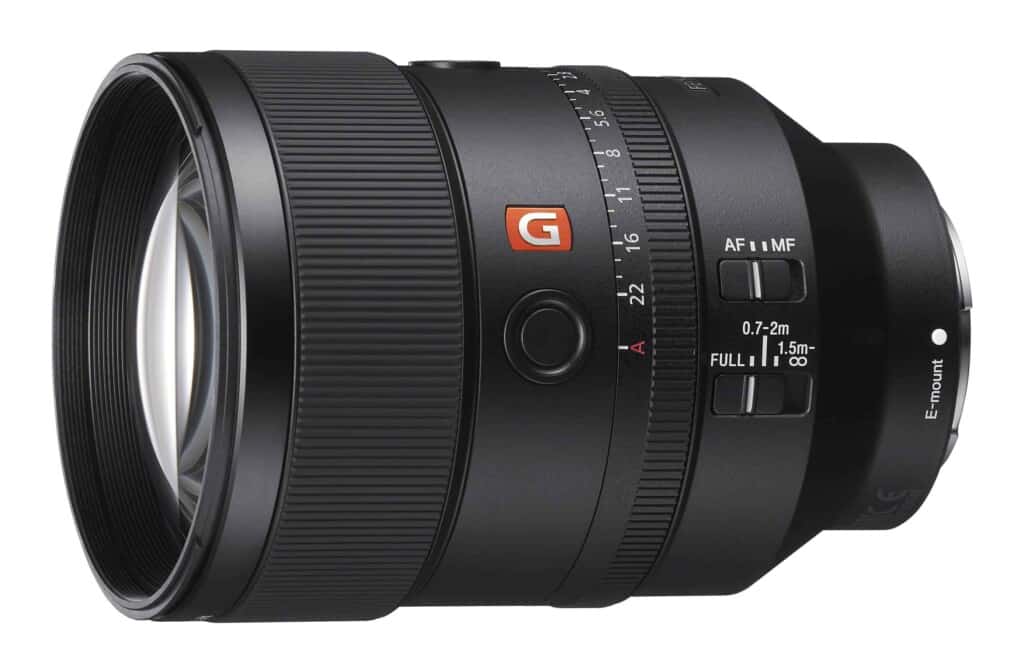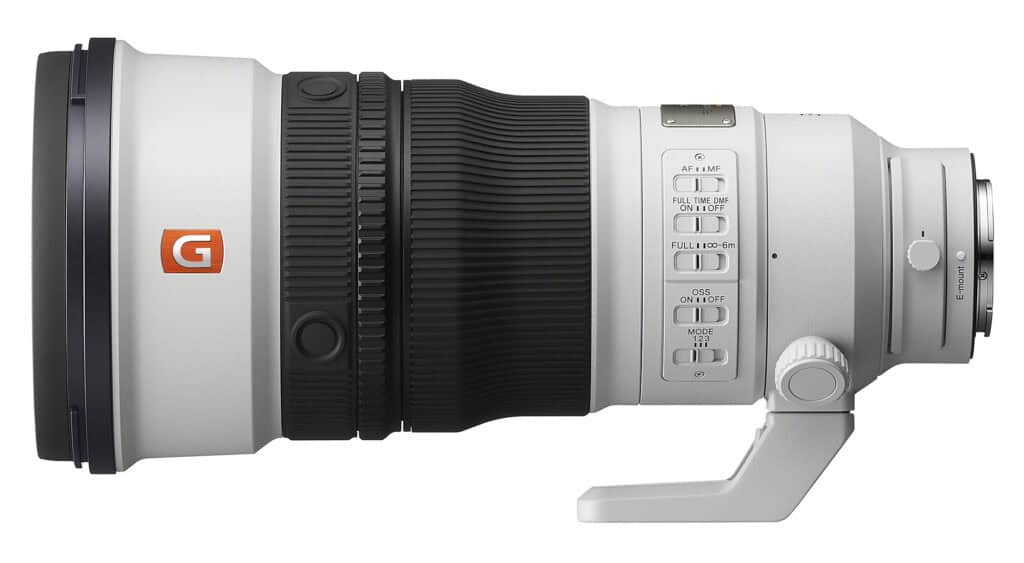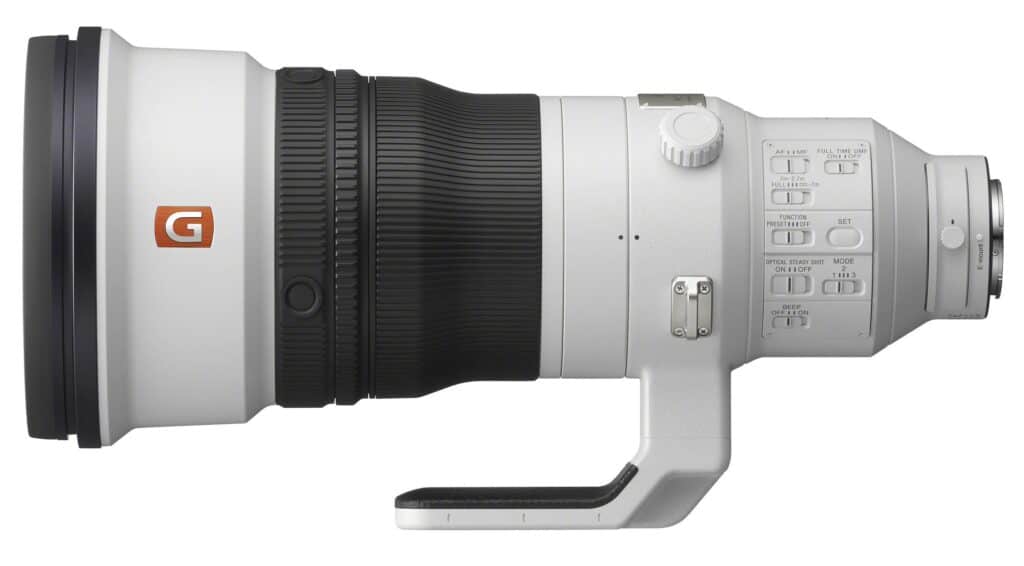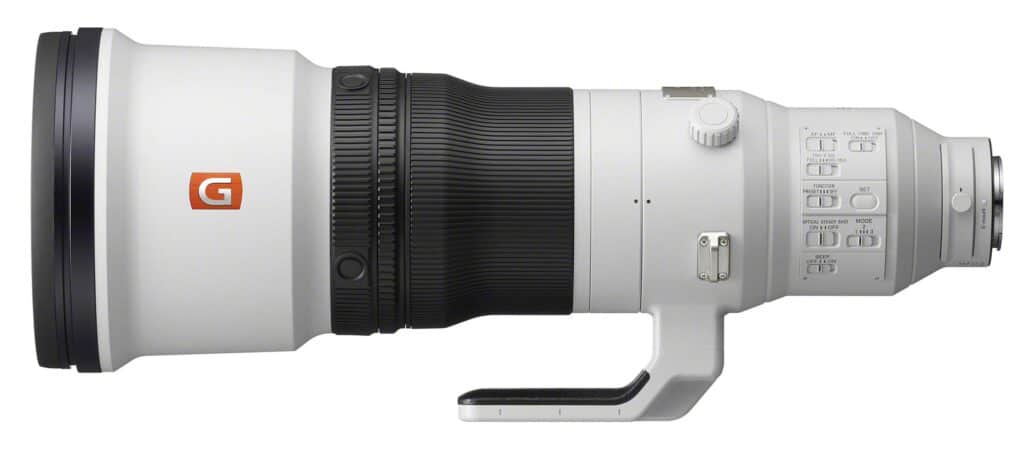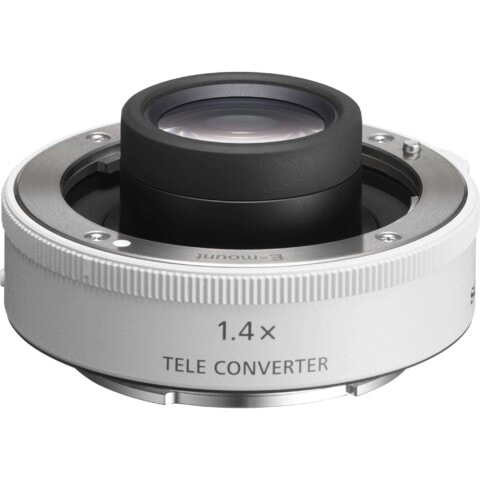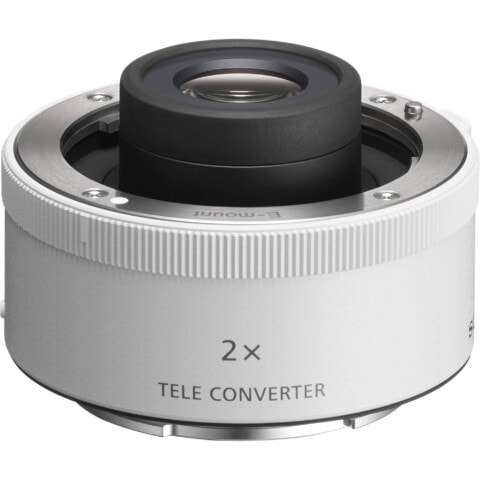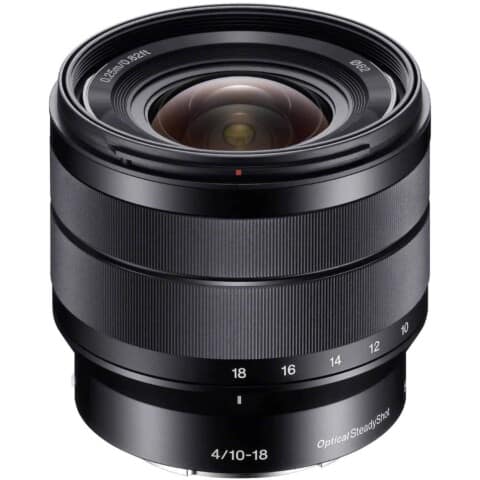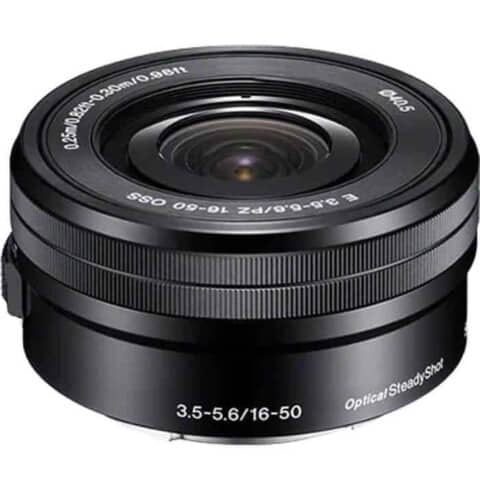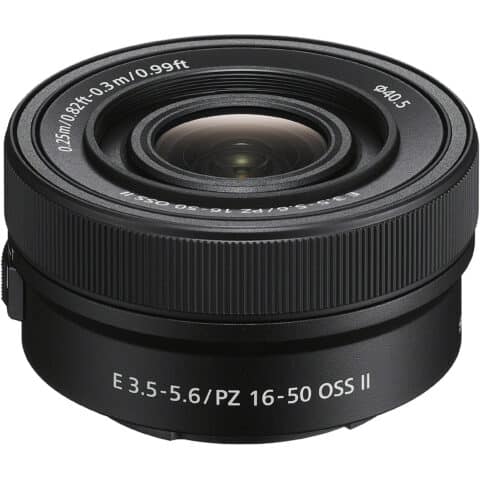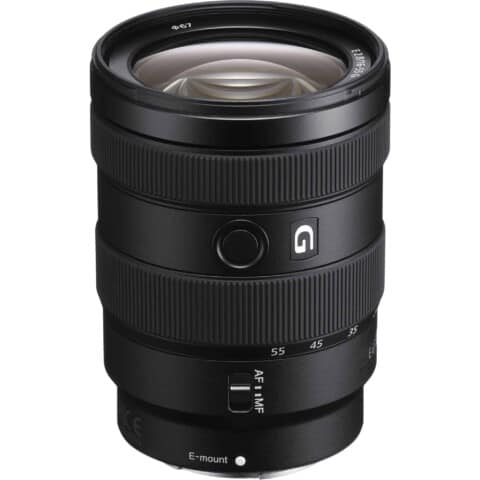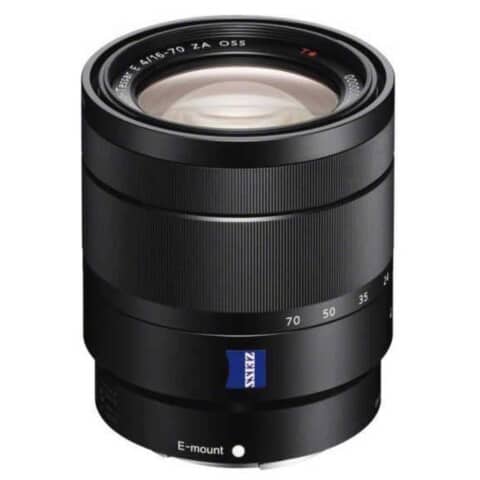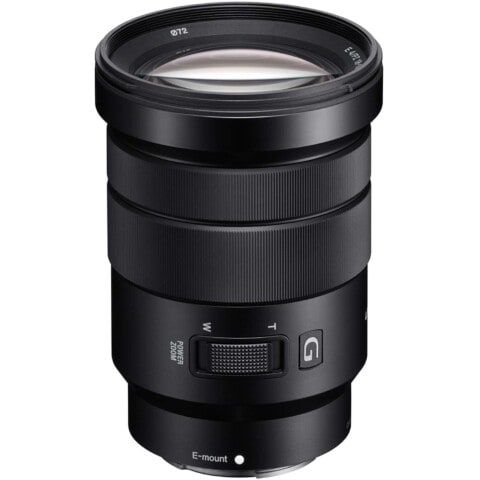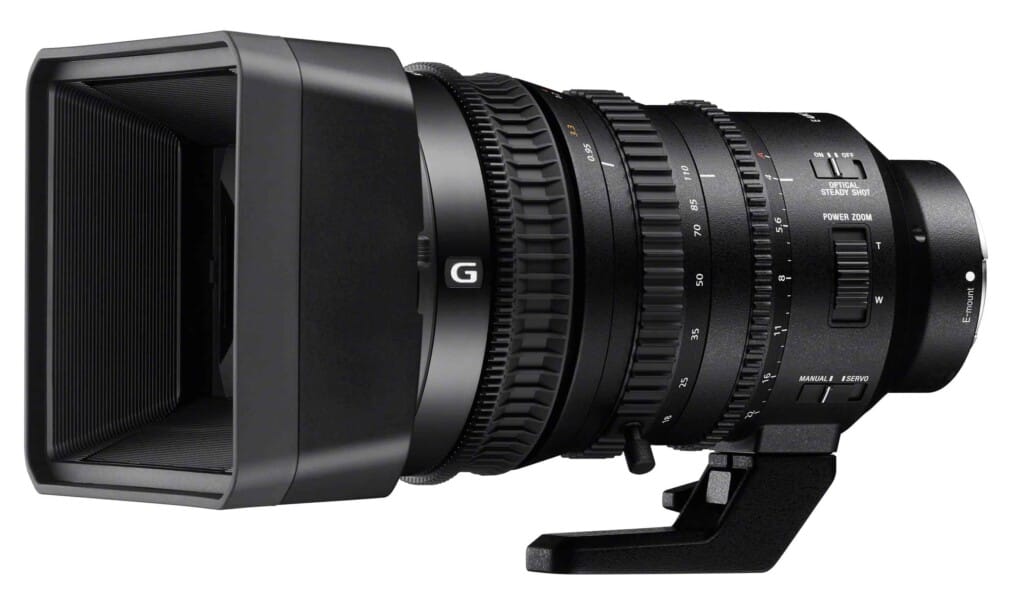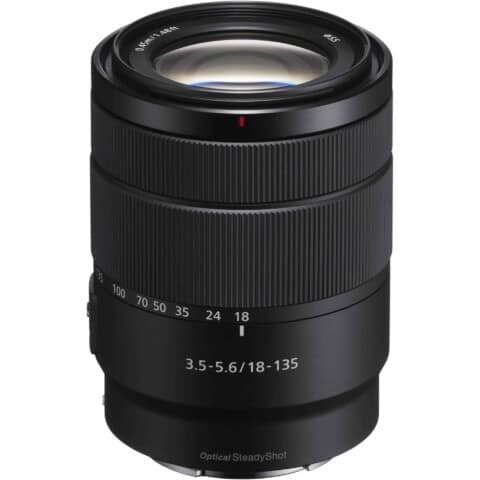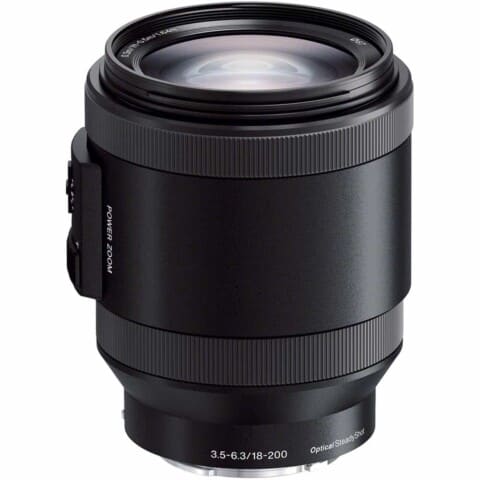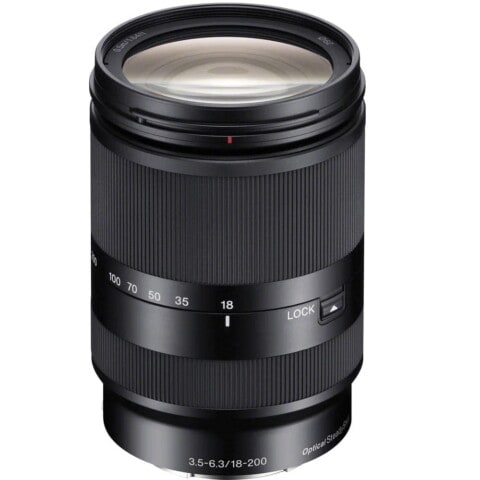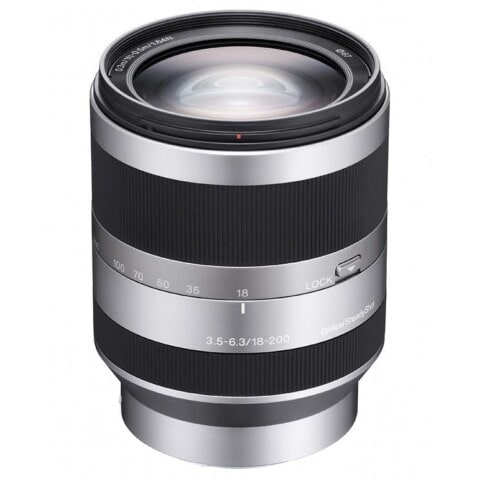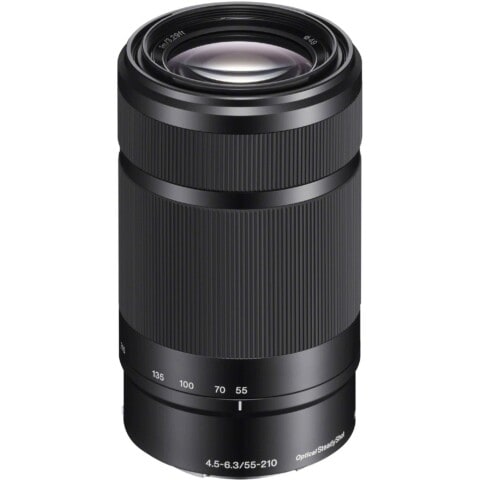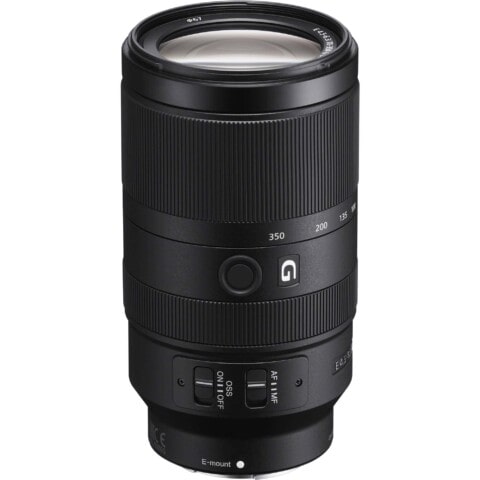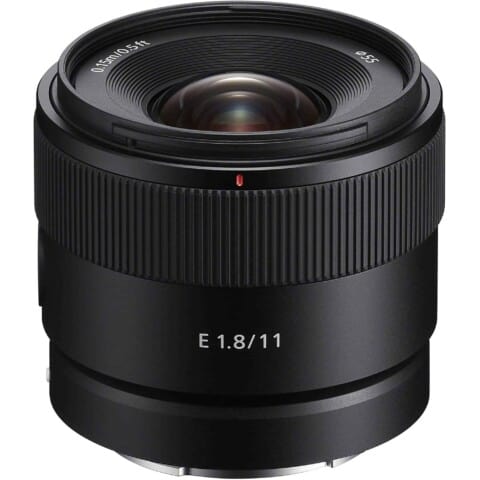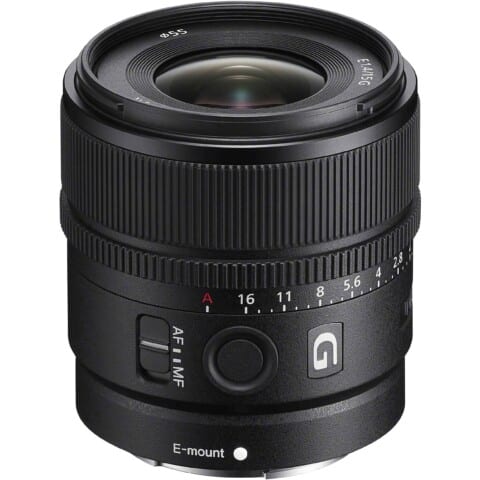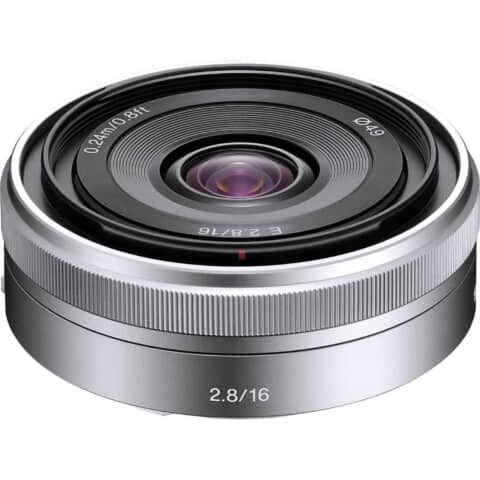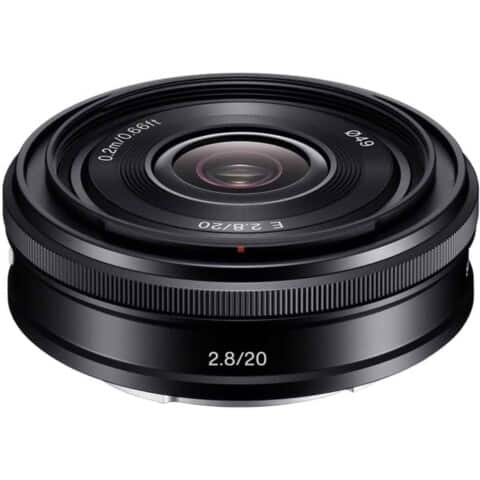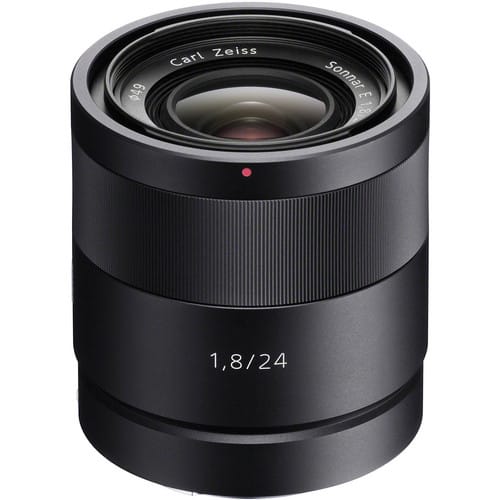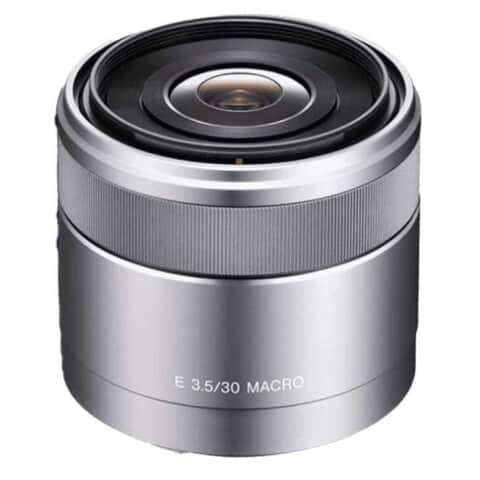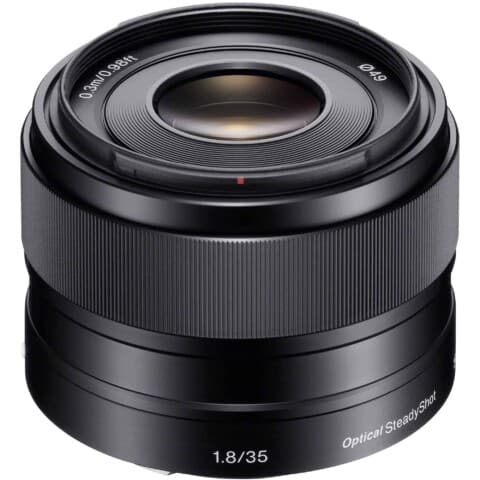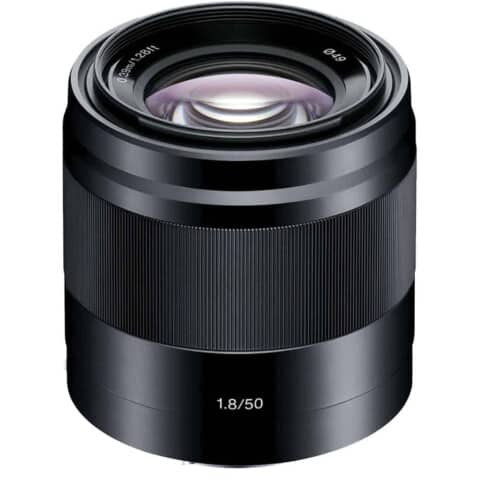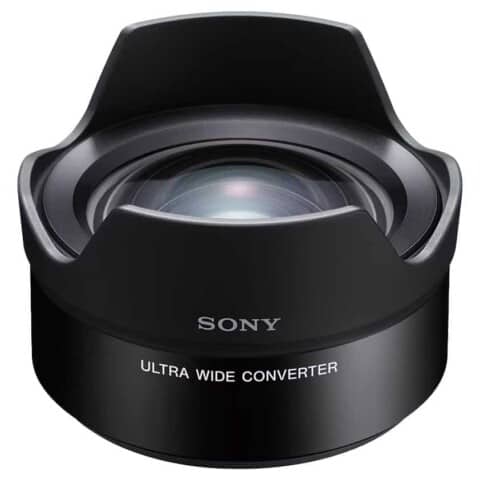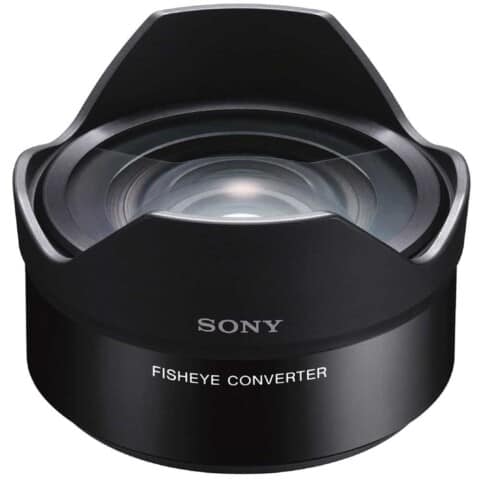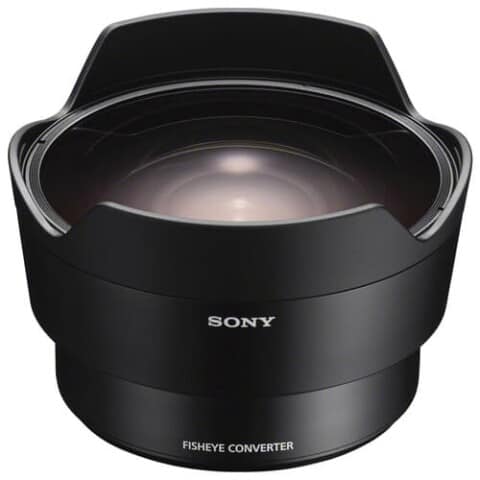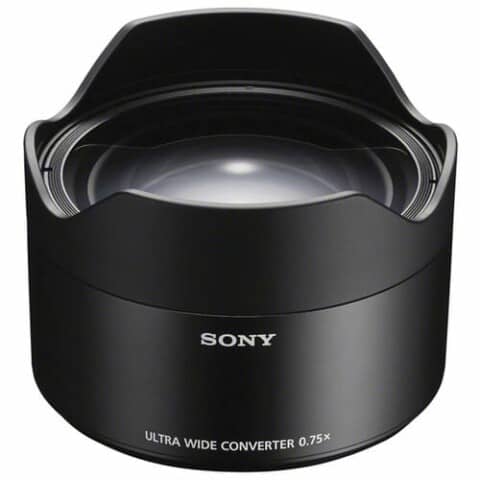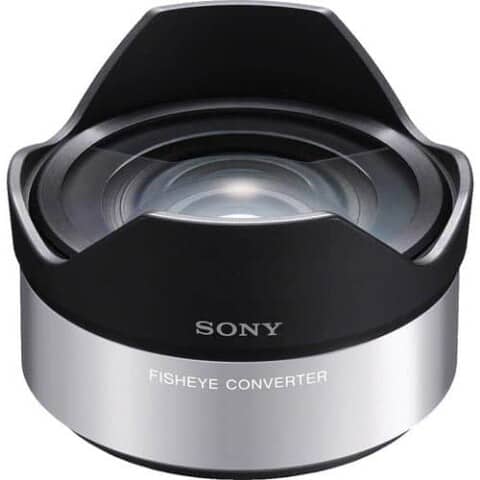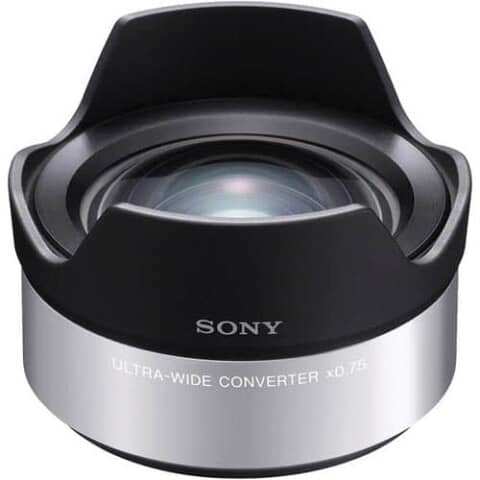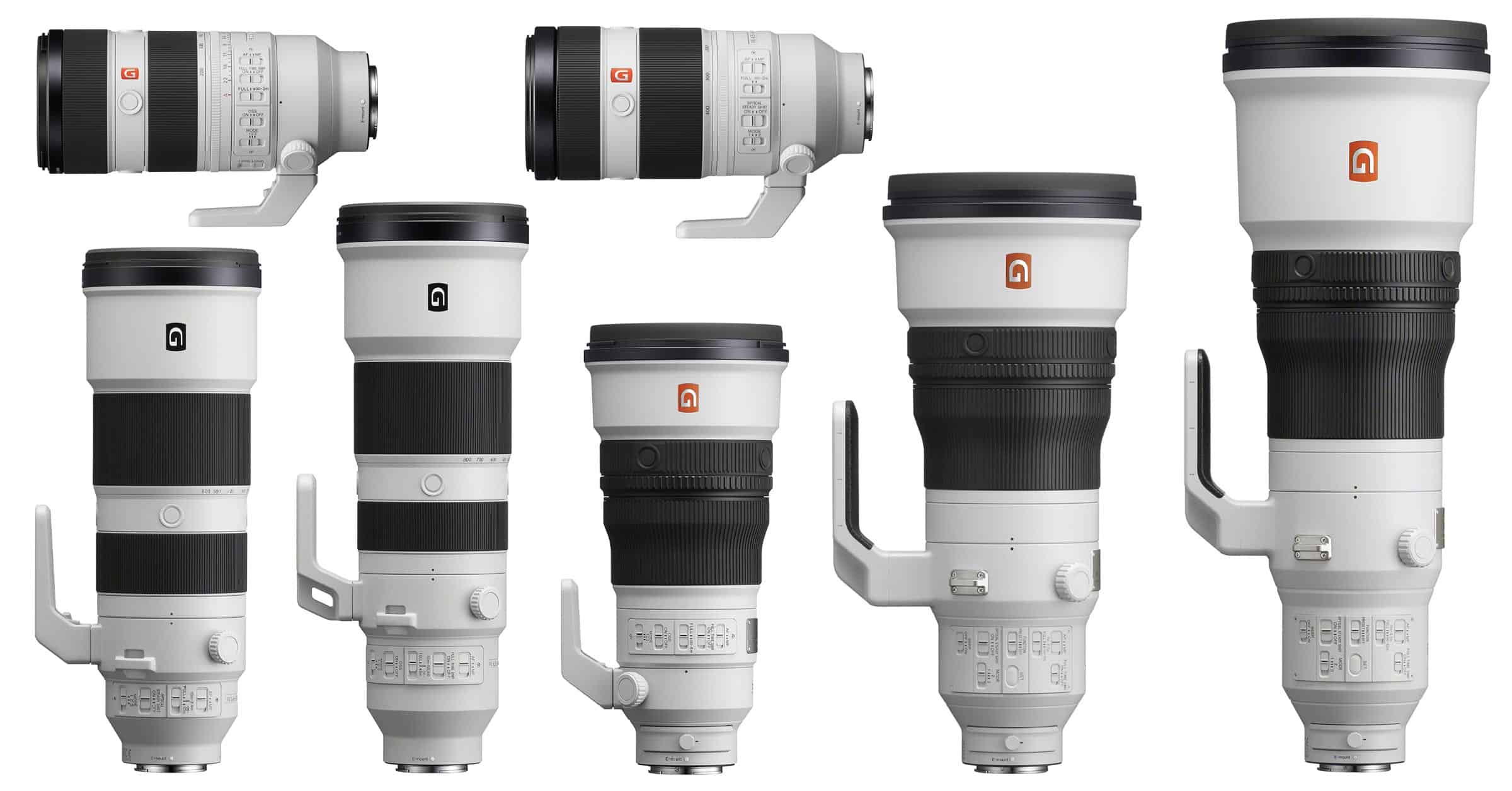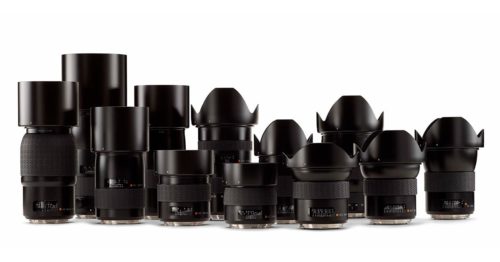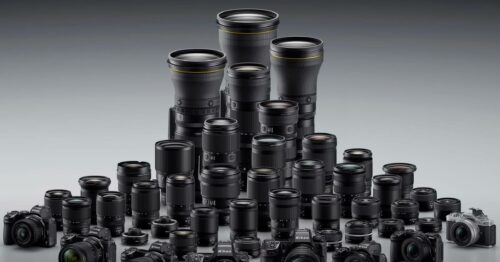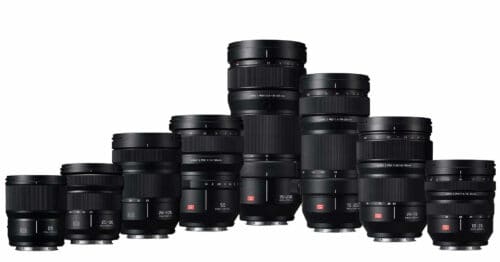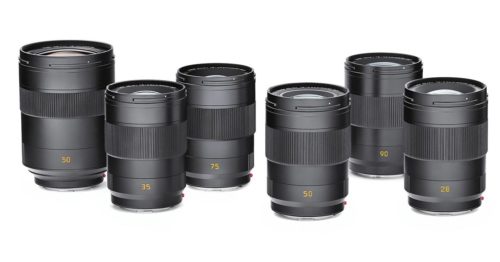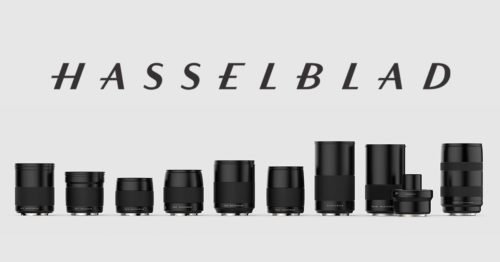Table of Contents
Sony Lens Terminology Key
This key is designed as a quick helper. Please see our complete guide to Sony and Zeiss lens terminology and abbreviations for more detailed information on the following Sony lens-related acronyms.
- E – E-mount lens for APS-C and Super 35 cameras.
- FE – Full-frame E-Mount lens.
- G – Gold Series lens. Sony’s second highest lens tier.
- C – Cinema lens with geared focus and aperture ring.
- GM – Gold Master, more commonly “G-Master” lens. Sony’s highest tier lens.
- LE – Light Edition. Only ever used once in 2012 to designate a particularly lightweight lens design.
- OSS – Optical SteadyShot is Sony’s name for in-lens image stabilization.
- PZ – Power Zoom lens with a motorized zoom control.
- SEL – Only used in official product codes, standing for Sony E-Mount Lens.
- TC – Teleconverter.
- ECU – E-Mount Converter Ultra-wide.
- ECF – E-Mount Converter Fisheye.
- T* – A lens equipped with Zeiss’ optical T coating.
- ZA – Zeiss approved “Zeiss Alpha” lenses built by Sony in Japan.
Sony Lens Annual Release Rate
How many lenses does Sony release every year for its mirrorless system? The answer varies, but the chart below provides some helpful historical context. It also shows the split between Sony’s full-frame FE and APS-C E lenses. Development-announced lenses are not included in the totals.
Sony Lens Release Dates
Sometimes it’s helpful to have a chronological list of Sony mirrorless lenses lens release dates to determine which lenses offer the latest technology. In this section, you will find a list of all Sony E-mount lenses arranged with the newest lenses at the top.
Occasionally Sony will make a “development announcement” for their lenses. Usually, this comes as a press release with basic information about the lens and a couple of photos if we’re lucky. In those cases, you will see two dates in the second column. The first date is the date of the development announcement, and the second is the official announcement date.
| # | Lens Model | Release Date (MM/DD/YY) |
|---|---|---|
| 2025 | ||
| 77 | FE 100mm f/2.8 Macro GM Lens | 09/30/25 |
| 76 | FE 400-800mm f/6.3-8 G OSS Lens | 02/26/25 |
| 75 | FE 16mm f/1.8 G | 02/26/25 |
| 2024 | ||
| 74 | FE 28-70mm f/2.0 GM | 11/19/24 |
| 73 | FE 85mm f/1.4 GM II (Announcement) | 08/28/24 |
| 72 | E PZ 16-50mm f/3.5-5.6 OSS II | 07/10/24 |
| 71 | FE 16-25mm f/2.8 G | 04/16/24 |
| 70 | FE 24-50mm f/2.8 G | 21/02/24 |
| 2023 | ||
| 69 | FE 300mm f/2.8 GM OSS (Leaked photos) (Announcement) | 01/17/23 (11/07/23) |
| 68 | FE 16-35mm f/2.8 GM II | 08/29/23 |
| 67 | FE 70-200mm f/4 G OSS II Macro | 07/12/23 |
| 66 | FE 50mm f/1.4 GM | 02/21/23 |
| 65 | FE 20-70mm f/4 G (Announcement) | 01/17/23 |
| 2022 | ||
| 64 | E 10-20mm f/4 PZ | 06/01/22 |
| 63 | E 15mm f/1.4 G | 06/01/22 |
| 62 | E 11mm f/1.8 | 06/01/22 |
| 61 | FE 24-70mm f/2.8 GM II | 04/27/22 |
| 60 | FE PZ 16-35mm f/4 G | 03/22/22 |
| 2021 | ||
| 59 | FE 70-200mm f/2.8 GM II OSS | 10/13/21 |
| 58 | FE 14mm f/1.8 GM | 04/20/21 |
| 57 | FE 24mm f/2.8 G | 03/23/21 |
| 56 | FE 50mm f/2.5 G | 03/23/21 |
| 55 | FE 40mm f/2.5 G | 03/23/21 |
| 54 | FE 50mm f/1.2 GM | 03/16/21 |
| 53 | FE 35mm f/1.4 GM | 01/31/21 |
| 2020 | ||
| 52 | FE 28-60mm f/4-5.6 | 09/15/20 |
| 51 | FE 12-24mm f/2.8 GM | 07/07/20 |
| 50 | FE 20mm F1.8 G | 02/25/20 |
| 2019 | ||
| 49 | FE C 16-35mm T3.1 G | 09/13/19 |
| 48 | E 70–350mm f/4.5–6.3 G OSS | 08/29/19 |
| 47 | E 16-55mm F2.8 G | 08/29/19 |
| 46 | FE 35mm F1.8 | 07/09/19 |
| 45 | FE 200-600mm f/5.6-6.3 G OSS | 06/11/19 |
| 44 | FE 600mm f/4 GM OSS | 06/11/19 |
| 43 | FE 135mm F1.8 GM | 02/26/19 |
| 2018 | ||
| 42 | FE 24mm f/1.4 GM | 09/20/18 |
| 41 | FE 400mm f/2.8 GM OSS | 06/27/18 |
| 40 | E 18-135mm f/3.5-5.6 OSS | 01/05/18 |
| 2017 | ||
| 39 | FE 24-105mm f/4 G OSS | 10/25/17 |
| 38 | FE 100-400mm f/4.5-5.6 GM OSS | 04/19/17 |
| 37 | FE 16-35mm f/2.8 GM | 03/17/17 |
| 36 | FE 12-24mm f/4 G | 03/17/17 |
| 35 | FE 100mm f/2.8 STF GM OSS | 02/07/17 |
| 34 | FE 85mm f/1.8 | 02/07/17 |
| 2016 | ||
| 33 | E PZ 18–110mm f/4 G OSS | 09/09/16 |
| 32 | FE 50mm f/2.8 Macro | 08/30/16 |
| 31 | Carl Zeiss Planar FE 50mm f/1.4 ZA | 07/16/16 |
| 30 | FE 70-300mm f/4.5-5.6 G OSS | 03/29/16 |
| 29 | FE 50mm f/1.8 | 03/29/16 |
| 28 | FE 24-70mm f/2.8 GM | 02/03/16 |
| 27 | FE 70-200mm f/2.8 GM OSS | 02/03/16 |
| 26 | FE 85mm f/1.4 GM | 02/03/16 |
| N/A | FE 1.4x Teleconverter | 02/03/16 |
| N/A | FE 2x Teleconverter | 02/03/16 |
| 2015 | ||
| 25 | Carl Zeiss Distagon T* FE 35mm f/1.4 ZA | 03/03/15 |
| 24 | FE 90mm f/2.8 G Macro | 03/03/15 |
| 23 | FE 24-240mm f/3.5-6.3 OSS | 03/03/15 |
| 22 | FE 28mm f/2 | 03/03/15 |
| N/A | VCL-ECF2 (Fisheye adapter for 16mm f/2.8 and 20mm f/2.8) | 03/03/15 |
| N/A | VCL-ECU2 (Wide-angle adapter for 16mm f/2.8 and 20mm f/2.8) | 03/03/15 |
| N/A | SEL057FEC (Fisheye adapter for 28mm f/2) | 03/03/15 |
| N/A | SEL075UWC (21mm converter for 28mm f/2) | 03/03/15 |
| 2014 | ||
| 21 | Carl Zeiss Vario-Tessar T* FE 16-35mm F4 ZA OSS | 09/15/14 |
| 20 | FE PZ 28-135mm f/4 G OSS | 09/12/14 |
| 2013 | ||
| 19 | FE 70-200mm f/4 G OSS | 10/15/13 |
| 18 | FE 28-70mm f/3.5–5.6 OSS | 10/15/13 |
| 17 | Carl Zeiss Vario-Tessar T* 24-70mm f/4 ZA OSS | 10/15/13 |
| 16 | Carl Zeiss Sonnar T* FE 35mm f/2.8 | 10/15/13 |
| 15 | Carl Zeiss Sonnar T* FE 55mm f/1.8 | 10/15/13 |
| 14 | E PZ 18–105mm f/4 G OSS | 08/27/13 |
| 13 | Carl Zeiss Vario-Tessar T* E 16-70mm f/4 ZA OSS | 08/27/13 |
| N/A | E 50mm f/1.8 (Black version) OSS | 08/27/13 |
| 12 | E 20mm f/2.8 | 01/22/13 |
| 11 | E PZ 18–200mm f3.5-6.3 OSS | 01/22/13 |
| 2012 | ||
| 10 | E 10-18mm f/4 OSS | 09/12/12 |
| 9 | E 35mm f/1.8 OSS | 09/12/12 |
| 8 | E PZ 16-50mm f/3.5-5.6 OSS | 09/12/12 |
| 7 | E 18–200mm F3.5–6.3 OSS LE | 05/17/12 |
| 2011 | ||
| 6 | Carl Zeiss Sonnar E 24mm f/1.8 ZA | 08/24/11 |
| 5 | E 50mm f/1.8 OSS | 08/24/11 |
| 4 | E 55–210mm f/4.5-6.3 OS | 08/24/11 |
| 3 | E 30mm f/3.5 Macro | 06/08/11 |
| 2010 | ||
| 2 | E 18–200mm f/3.5-6.3 OSS | 08/12/10 |
| 1 | E 16mm f/2.8 | 06/11/10 |
| N/A | VCL-ECF1 (Fisheye adapter for 16mm) | 06/11/10 |
| N/A | VCL-ECU1 (Wide-angle adapter for 16mm) | 06/11/10 |
Note on Carl Zeiss Lenses
Those new to Sony mirrorless lenses might wonder why this guide includes several Carl Zeiss lenses introduced between 2011 and 2016 while not having other third-party lenses. The Zeiss ZA lenses listed on this page are Sony lenses designed and built by Sony in their Japanese factories. Although “Zeiss approved”, these are Sony lenses, which is why they belong in this guide.
Note on Number of Lenses
I’m keeping a running tally of the number of Sony E-amount mirrorless lenses in the left-hand column of the lens release date table. I am not counting teleconverters and the various lens adapters that Sony experimented with during the early days of the E-Mount system. As far as I’m concerned, it does not count as a new lens if it has to be mounted on a previous lens to function. Sony and I differ in this regard, so my total might differ from theirs.
Sony Lens Price Check Tool
Check Lens table of contents again for link errors – they are all broken

